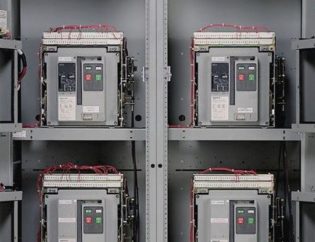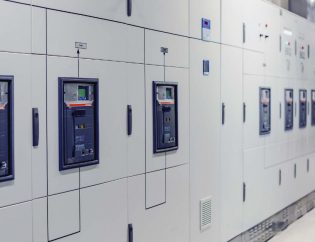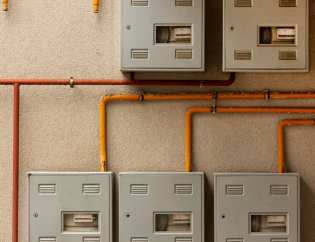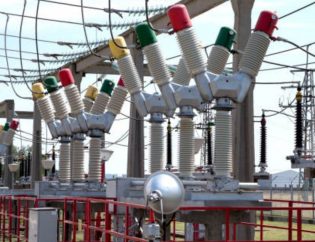There are several ways to protect power transformers: overcurrent protection, overvoltage protection, earth fault protection, and differential protection. Each method is designed to detect and isolate specific types of faults quickly and accurately, minimizing damage and downtime. This blog post will discuss failure types in power transformers and differential protection for power transformers in detail.
Failure Types in Power Transformers
Failure types in power transformers refer to the various ways in which power transformers can malfunction or fail, including mechanical, electrical, and environmental failures. Let’s talk about each one below:
Mechanical Failure
Mechanical failures in power transformers can occur due to various factors such as vibration, excessive loading, and poor maintenance. These failures can damage the transformer’s windings, bushings, and other components, resulting in costly repairs or even replacement of the transformer.
Electrical Failures
Electrical failures in power transformers can occur due to various factors such as overloading, short circuits, and insulation failure. These failures can damage the transformer’s windings, causing costly repairs or even replacement of the transformer.
Environmental Failures
Environmental factors such as temperature, humidity, and pollution can also contribute to power transformer failures. These failures can occur due to overheating, corrosion, and other environmental factors, leading to costly repairs or even replacement of the transformer.
Don’t leave your power transformer vulnerable to failures. Let ECSKSA’s team help you find your system’s right power transformer protection solution. Contact us today.
Causes of Power Transformer Failures
Power transformers are complex electrical devices that are subject to a variety of types of failures. Various factors, including environmental conditions, age, and overloading, can cause these failures. Understanding the causes of power transformer failures is important for preventing and mitigating their impact on power systems. Some common causes of power transformer failures include:
- Overheating: This can occur when the transformer’s cooling system fails or when there is an excessive load on the transformer, causing the temperature to rise.
- Short Circuit: A short circuit in the transformer can occur due to a variety of reasons, including insulation failure, damage to the transformer’s windings, or a problem in the power system.
- Insulation Failure: Insulation failure can be caused by various factors, including age, environmental conditions, and overloading. This can lead to arcing, short circuits, and other problems.
- Mechanical Failure: Mechanical failures can occur due to a variety of reasons, such as poor maintenance, manufacturing defects, or damage from external factors. These can include problems with the transformer’s cooling system, damage to the transformer’s housing, and issues with the transformer’s internal components.
How Differential Protection Works in Power Transformer Protection
In power transformer protection, differential protection uses a current transformer (CT) on both the primary and secondary sides of the transformer. The CTs are connected so that the current flowing into the transformer on the primary side is compared to the current flowing out on the secondary side. The differential protection system continuously monitors the current flowing into and out of the transformer. When a significant difference is detected, it triggers an alarm and/or trips the breaker to isolate the faulted transformer.
During regular operation, the current flowing into the transformer on the primary side is equal to the current flowing out on the secondary side. However, when a fault occurs within the transformer, the current flowing into the transformer will be different from the current flowing out. This difference in current is called the “differential current” and is used to detect the fault. The differential protection system compares the primary and secondary currents. If the difference exceeds a certain threshold, it indicates the presence of a fault within the transformer, and the system will trip the breaker to isolate the transformer.
The differential protection system is designed to be highly sensitive to internal faults within the transformer and relatively insensitive to external faults in the power system. This makes it an effective protection method for power transformers as it can quickly and accurately detect internal faults, minimizing damage and downtime.
Also, Read Power management system and its Components.
Advantages and Disadvantages of Differential Protection
Differential protection, also known as “current differential protection” or “ΔI protection,” is a widely used method in power systems to detect and isolate faults in electrical equipment, such as power transformers, generators, and transmission lines. It has several advantages and disadvantages that are worth considering while implementing it.
Advantages of Differential Protection
- High accuracy in detecting internal faults in the protected equipment
- Selective tripping: it will only trip the breaker on the specific section of the faulty equipment, rather than tripping the entire system, which helps minimize downtime and improve the availability of the power system.
- Fast fault detection: as it continuously monitors the current flowing into and out of the transformer, it can quickly detect internal faults.
- Immunity to external faults: as it compares the primary and secondary current, it is relatively insensitive to external faults in the power system.
Disadvantages of Differential Protection
- Expensive and complex: installing and maintaining differential protection equipment can be costly and require skilled personnel.
- Sensitivity to CT errors: differential protection relies on the accurate operation of CTs, which can cause errors if they are not properly maintained or if there are saturation issues.
- Not suitable for all types of faults: it is mainly used to detect internal faults and may not be effective for certain types of external faults, such as earth faults, or when the transformer is paralleled with another.
Overall, differential protection is a widely used and reliable protection method for power transformers, but it is essential to consider its advantages and disadvantages before implementing it.
Conclusion
In conclusion, power transformer protection is crucial for ensuring the reliability and stability of power systems. The differential protection method, which continuously monitors the current flowing into and out of the transformer, is considered one of the most effective and reliable protection methods. It can detect internal faults in the transformer quickly and accurately, minimizing damage and downtime. However, it’s also essential to understand the disadvantages of the method, such as its cost and complexity. By understanding the various methods of power transformer protection and their pros and cons, power systems can be better protected and maintained.
At ECSKSA, we offer a wide range of power management solutions, including SMDB panel boards, generator control panels, power factor correction panel boards and automatic transfer switches etc
Do you have a question in your mind? If so, make sure to fill out the form below!







